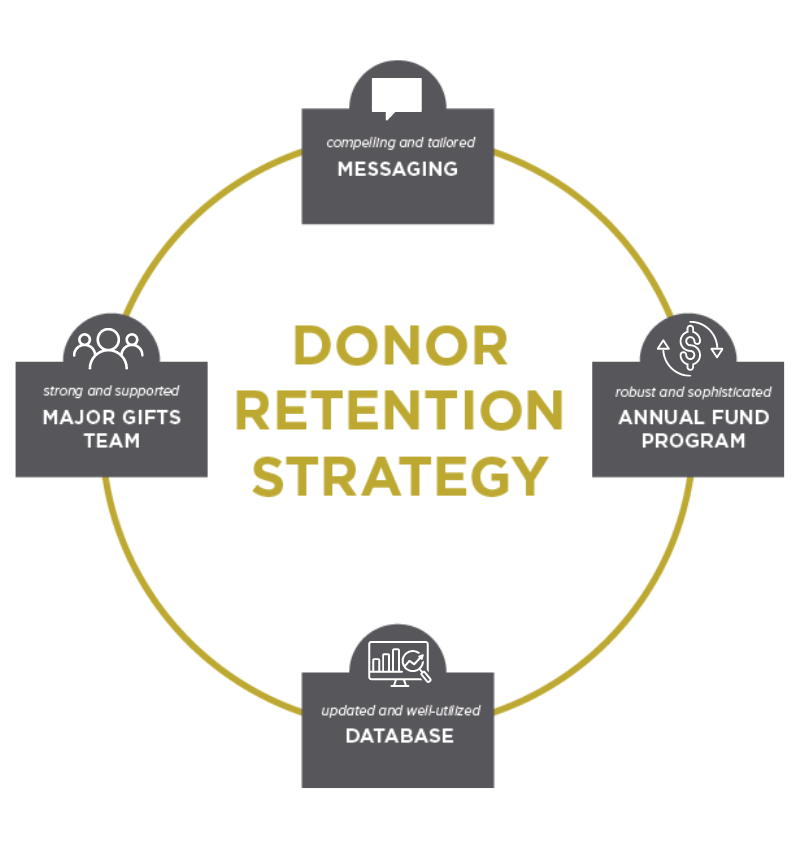Posted June 19, 2020
Good news: Zoom solicitations are working!
We are all learning a lot about how to best use various strategies and technology platforms to engage donors. And, in the past few weeks (seems like years!) more and more are venturing into online major donor solicitation. A few truths at the outset.
The basic tenets of major gift fundraising best practices do not change: Do your research. Understand your donor’s motivations and interests. Listen to what they are saying. Engage them in what they care most about. Ask when they indicate they are ready. And of course, during the meeting itself, use (and stick to) an agenda.
However, the way you execute in a virtual environment—that is, the tactics you use—must change to fit the medium. Virtual engagement and solicitation demand more planning, preparation, and discipline to be successful.
Our clients are reporting that prospects are more comfortable than they imagined, and they say that virtual meetings have been helpful in getting both members of a couple to attend. We have heard some fabulous outcomes. So…we thought that in this edition we would share some of their tips and strategies (plus our own observations) to build your confidence and create success in your virtual asks.
1. Asking for a Zoom call.
When reaching out to a donor to request a meeting, suggest a Zoom call because it allows you to be “face to face” and gives you the opportunity to share more detailed information. For donors who have already participated in Zoom debriefs or other group presentations, it’s safe to assume they are open to the medium. If you are unsure, you can always offer a phone call as a second option. Something like this: “We are overdue for a ‘visit’ and I have lots to update you on. We’ve had many thoughtful conversations over Zoom lately. If you are willing, I’d be pleased to schedule a meeting in the next few weeks. Please let me know your availability. 45 minutes should do it. Of course, if Zoom isn’t for you, we can cover most things on a phone call.”
2. Put extra effort into your plan.
When virtual, it is harder to regroup or recover from a misstep or to fill those “gaps” that naturally occur in conversation. To ensure success: 1) Be clear about your ask amount and strategy. (Consider using a thorough visit brief so that all staff and volunteer participants have the history, the cultivation that has led to the ask, and the rationale for the ask and the ask amount.) 2) Make sure that you have very deliberate goals for the meeting: who will play which roles, etc. 3) Make sure that all participants are knowledgeable about the ask purpose and are fluid in talking about the funding priority. 4) Make sure that you know who is “in command” of the meeting so that when a gap occurs, one of you knows it is your job to jump in, redirect, or otherwise keep things on track. Use an agenda with detail and talking points for yourself and any colleague or volunteer that will participate. Choreography is extra important when virtual!
3. Short virtual “visits” tend to work better.
Consider scheduling a 45-minute meeting for what you plan to be a 30-minute call.This will both ensure that you do not get booted out and that you have a little extra time if you need it. Giving back time is almost always a gift!
4. Make sure you have asked if you can ask.
It is not easy to manage a surprise on Zoom so try to avoid it to begin with. Make sure you have discussed in advance your hope that you can talk about their support on the call. Conversely, do not disappoint donors who are expecting an ask when none comes. If you are not practiced at asking if you can ask, consider this: “In this visit, may we begin talking about your financial support of xyz initiative?” Or, “Are you ready to begin talking about your support of xyz?” Prospects are ok with answering the question.
5. Consider using a pre-read for the prospects where you might previously have been tempted to use a sizeable deck or video.
For the most part, Zoom seems to be working better when you are discussing content. A bit of small talk is ok, but it wears thin quickly! If you have extensive content that you are tempted to share on screen, consider sending in advance.
While PowerPoints or video can be effective, it is best if it is very short and quite engaging – you don’t want to read text; use photos, graphs, and/or infographics to make it memorable. Also, not all prospects feel as comfortable with the shift between screen shares and face time. To this end, make sure that your CEO or Board member know the content inside and out to avoid a fumble.
6. Practice, practice, practice!
It is likely that by now, you are pretty comfortable with your colleagues on Zoom. That does not mean you will be equally comfortable with prospects and/or volunteers. Your level of confidence will make a difference and it will show. Do everything you can to feel very good about your strategy and the Zoom format heading into the solicitation. Practice with a development team member.
7. As a rule, virtual solicitations work better for prospects who know a fair amount about your organization than for prospects new to you.
Yet offering virtual engagements to new donors—like Zoom updates from your CEO or virtual forums to elicit input on specific topics—are great ways to expand their understanding of your organization and bring them closer.
8. Make it easy to close a gift.
Following a successful virtual solicitation, be sure to follow up immediately in writing. Bonus tip: consider using DocuSign to close gifts. Fully electronic, the software makes the process more efficient and secure, and best of all, it’ll protect your staff and donors, who will no longer need to go to the post office in person to mail documents.
Whatever you do, do not wait to use virtual tools to engage your supporters, old and new. Remember, “the best form of cultivation is a good solicitation.” They are waiting for you!




